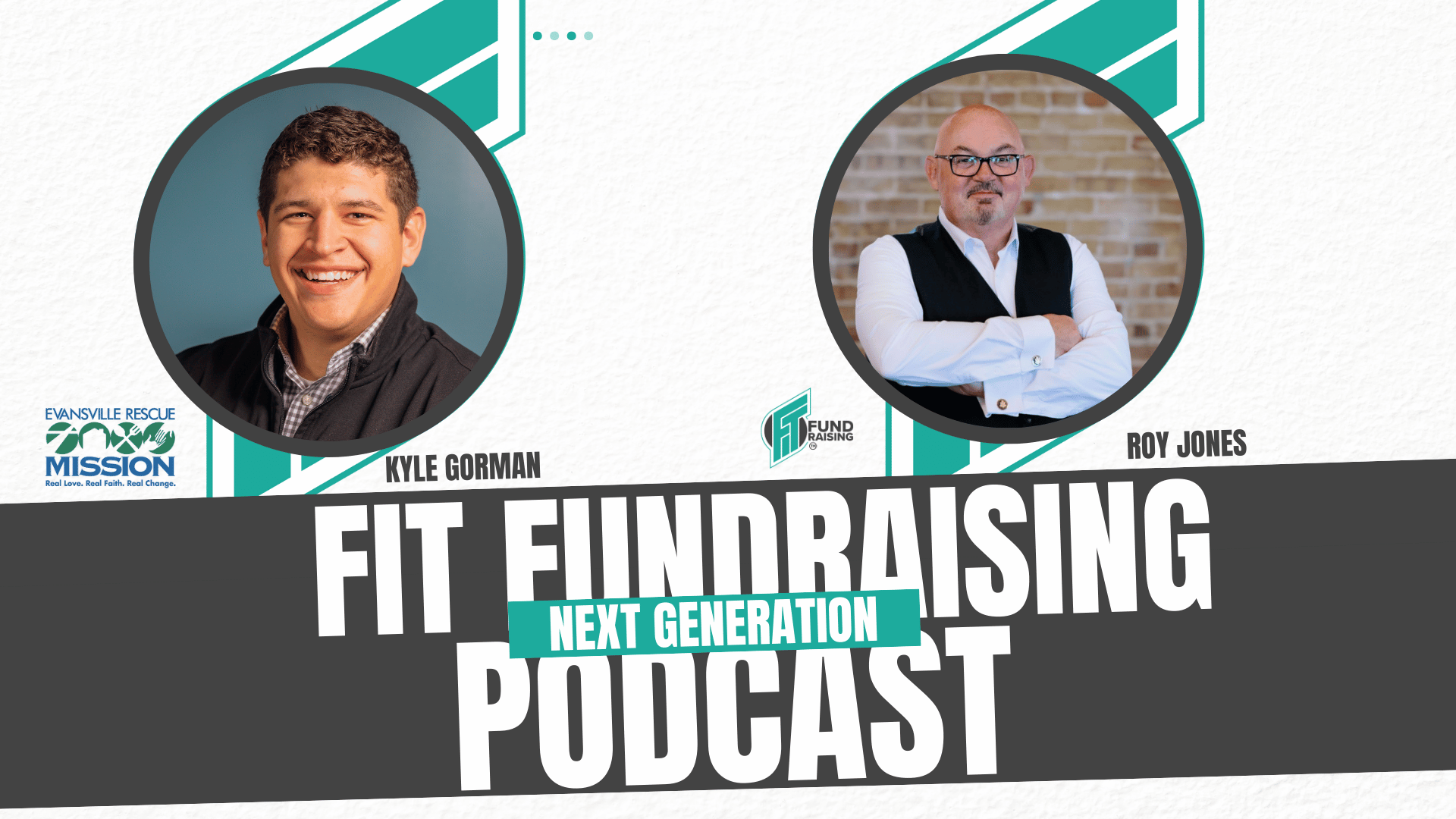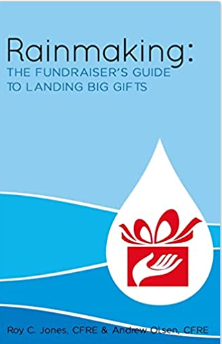Intro
Welcome to the Fit Fundraising podcast, where we bring you game changing fundraising topics direct from our meetings with major donors and nonprofits nationwide. We don’t interview consultants who haven’t met a donor in decades for fundraising stays on the front lines with nonprofit donors and leaders. This podcast is a glimpse into our work with nonprofits as we get on the field of them and successfully modeled fundraising.
Roy Jones:
Welcome to the Fit Fundraising Podcast. I’m Roy Jones, and I’ve got a special guest for you today. Thank you so much for joining us.
Today we’re drilling down on generational giving. What’s the difference between a Boomer, a Millennial, and a Gen Z donor? How do they give—and how do they impact our databases?
I believe I have with me one of the top young philanthropic leaders in the country. I’m excited to introduce Kyle Gorman. He’s the Executive Director of Advancement at the Evansville Rescue Mission, where he leads marketing, public relations, volunteer engagement, and fundraising. With nearly six years of experience in this role, Kyle has traveled the country learning from top fundraising professionals and applying innovative strategies to drive community impact. He holds an MBA in Marketing from the University of Southern Indiana. Outside of work, he’s a husband, a dog lover, and an avid IndyCar enthusiast.
Kyle, thank you for joining us today.
Kyle Gorman:
Thanks for having me.
Roy Jones:
Let me start with this: how important is it to push sustainer giving upfront, especially with younger donors?
Kyle Gorman:
I think it’s vital. For us, as a faith-based nonprofit, we talk a lot about being focused and faithful in your giving, in line with what the Bible teaches. Some from older generations question whether setting donations on autopilot is truly mindful. But I see it differently: the first gift is the most important. That first moment of commitment sets the course.
Whether or not someone is giving for spiritual reasons, I know I need to catch them right at the start. I’m less worried about the third or tenth donation. I need you to just begin.
Roy Jones:
That’s interesting. What I’ve seen is, if they don’t become sustainers early, many are one-and-done.
Kyle Gorman:
That’s right. In our research, Gen Z tends to see a need, give once, and then move on—or forget. That’s where social media comes in. If they’re seeing us weekly—or even multiple times a week—it increases visibility and prompts more giving. Frequency matters.
Roy Jones:
Change is always hard. What advice would you give to a younger development officer trying to convince an old Boomer like me to adapt to new techniques or technology?
Kyle Gorman:
Lean into the trends you see, but don’t ignore the older generations. Whether you’re working with a Boomer colleague or cultivating a Boomer donor, you have to adapt your approach. It’s about having the flexibility and skill set to connect across generations.
Roy Jones:
Good point. Let’s talk about development teams. What are you seeing with younger professionals coming into fundraising?
Kyle Gorman:
Right now, I see a lot of Millennials—one generation above me. Maybe that’s because of my position as an executive director; I get to interact with colleagues across the country. But we just hired someone who’s 22, even younger than me, and her approach is very different from mine—even though technically we’re in the same generation.
As a young leader, I’ve had to learn how to lead people both older and younger than me. That requires confidence in yourself and your vision, which can be a challenge for young leaders.
Roy Jones:
That’s insightful. One thing I’ve noticed is that nonprofits haven’t historically segmented their donor files by age or generation. Do you approach segmentation differently, or is it still based on recency, frequency, and dollar amount?
Kyle Gorman:
For us, frequency is still the main driver. But we’re moving toward more segmentation—major donors, mid-level donors, sustainers. With a small team, we have to maximize our resources. In 2025, we’re planning to expand and finally dig deeper into generational segmentation, particularly in Evansville. I’m excited to see how that develops.
Roy Jones:
When you look at major gifts—say $5,000 and up—how does that break down by generation?
Kyle Gorman:
Right now, about 80% of those gifts come from Boomers, 15% from Millennials, and maybe 5% from Gen Z. It’s still rare to meet with Gen Z at that level. But the wealth transfer is here—we’re at the cusp. Over the next 20 years, Millennials and Gen Z will be stepping into family foundations and significant giving roles.
Roy Jones:
Exactly. And that’s part of why donor-advised funds have grown so quickly—they’re almost like a “poor man’s foundation.” Anyone can go to a financial institution, open one up, and suddenly they’re in the philanthropy game.
Kyle, this has been an amazing conversation. If listeners want to connect with you or learn more about your work, where should they go?
Kyle Gorman:
Visit EvansvilleRescueMission.org. On the About Us page you’ll find my contact information. I’d be happy to connect and share insights.
Roy Jones:
Thank you, Kyle—and thank you to our listeners. Remember, we’ve built Fit Fundraising by offering free fundraising counsel. Last year alone, we gave over 300 hours to more than 40 nonprofits nationwide. Of course, some became clients—but our goal is to pay it forward, helping others build strong, Christ-centered fundraising programs.
Visit FitFundraising.com to learn more. And don’t forget to subscribe to the Fit Fundraising Podcast on your favorite platform so you never miss an episode.
Intro
Thanks so much for listening to the FIT Fundraising Podcast. Please make sure to subscribe on your favorite podcast app so you’ll be notified of future episodes. And as always, make sure to visit fitfundraising.com to get your fundraising program into shape.
- Follow Us: Facebook | LinkedIn
- Subscribe to the Fit Fundraising Podcast: Apple Podcasts | Spotify
- Visit our Website at fitfundraising.com


